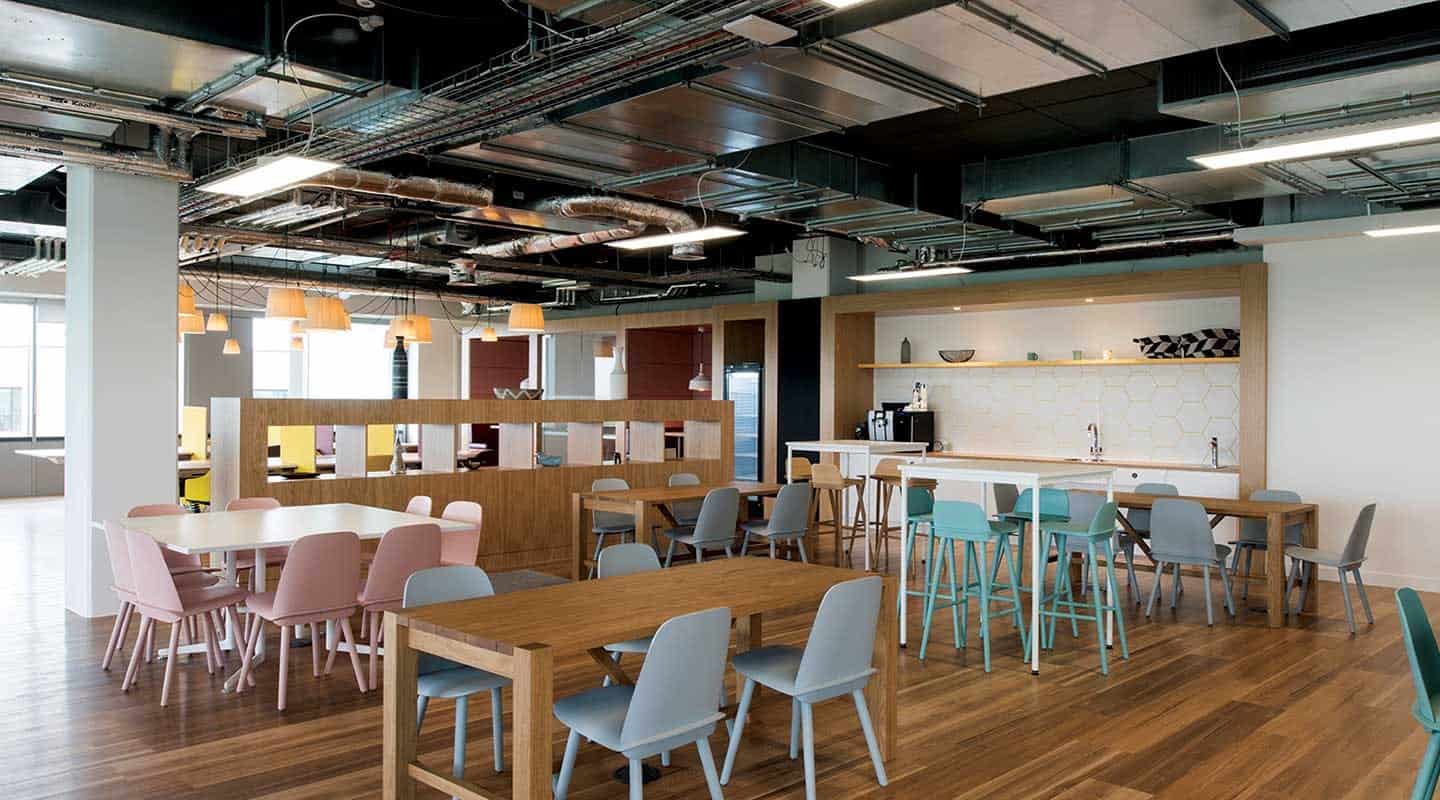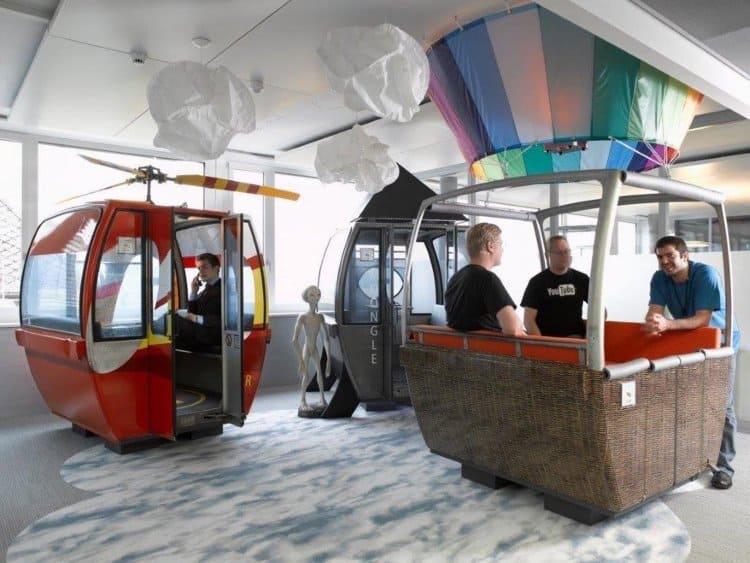To have a productive workforce, one of the main things that employees must have is flexibility. Flexibility is often tied to work-life balance, independence, casual work environment, and a conducive work environment.
But how does flexibility translate to workplace productivity? Flexibility involves finding ways of giving employees the freedom to choose how and where they engage in work. Most employers are often on the fence on whether to offer flexibility and whether that will really translate to productivity. As such, many employers are afraid of changing the work environment and work style for fear that employee will become disengaged in their work. However, flexibility when done right can eliminate such issues as burnout resulting in a productive workforce.
Flexibility in the workplace is still something the employers are still struggling with. It raises a lot of issues like whether flexibility and productivity can go together and whether it has an impact on innovation as well as the efficiency of employees. It is, however, a very important topic of discussion, because without even realizing it, flexibility has a huge impact on how a company attracts, hires and retains top talent.
Studies have it that when looking for a job, for most job seekers, factors related to flexibility like work-life balance and a friendly work culture are some of the things that determine where they will work. This is especially true with millennials and being that a majority of the workforce today is composed of millennials, it is only ideal that employers start looking at flexibility in a positive light. (We have written a similar article – millennials and workplace flexibility )
)
A strict cubicle work environment affects the work culture and can have an effect on morale and creativity resulting in a less productive workforce due to all the bureaucracy and a monotonous work environment. While employees may tolerate such a culture because they need a job, such a company will always have a high turnover, especially from top talent.
Successful companies understand that talent plays a very important role in the success of the company, and that in order to attract the best, you must create a comfortable environment that allows employees to thrive rather than fall into a routine. Tailoring the environment and culture to meet the needs of the employees encourages them to put their best in what they do and not to mention such employees feel appreciated.
understand that talent plays a very important role in the success of the company, and that in order to attract the best, you must create a comfortable environment that allows employees to thrive rather than fall into a routine. Tailoring the environment and culture to meet the needs of the employees encourages them to put their best in what they do and not to mention such employees feel appreciated.
The problem that most employers make is looking at flexibility as a means of benefiting the employees alone but what they don’t see is the big picture; employees who are satisfied and find meaning in what they do will put their best effort to make sure that the company succeeds. Employees who feel like their companies trust them are more likely to appreciate their flexible employers than those who are not. In turn, such employees will improve their approach to work and put in more effort to meet the expectations of their managers and employers.
A flexible work environment ensures that employees work hand in hand with their managers towards meeting the organizational goals rather than to please a certain individual or avoid reprimand if they don’t do what is expected of them.
One of the realities that most employers are yet to come in terms with is that it does not matter when, where or how an employee gets their work done. However, flexibility is a double-edged sword and such an arrangement will only work if the said employees are doing their jobs and meeting deadlines and set objectives.
How to Create a Flexible Work Environment

Creating a flexible work environment can be achieved in various ways.
1. Part Time Schedules
One of the ways a part-time work schedule can be achieved is in the case where a company is finding it hard to fill a certain position. They can then hire part-time employees to share their duties rather than hiring someone for a full-time position.
Existing employees could also use a flexible work schedule especially those who are still pursuing their studies, working mums and those pursuing other passions and hobbies on the side. As long as an employee can work some of the days at home and others in the office and still deliver and meet deadlines, there is no reason why they should be stuck in the office five days a week if it’s not necessary.
2. Telecommuting
Telecommuting basically works by allowing employees to have multiple choices on where they can do their work like at home or elsewhere outside the office. The good thing about telecommuting is that it can work for both part-time and full-time employees without affecting their quality of work.
Telecommuting not on saves costs on the employee’s side but can cut on the budget for a company and save on money that would have been spent setting up an office, maintaining work equipment, and other bills that the company may incur in the long run. This type of flexibility is geared towards reducing staff turnover since some employees according to recent studies are more comfortable and will work better if they can create their own workspaces as well as schedules.
3. Freelancing
Freelancing has been there for decades and seems to work for more successful companies. Freelancers are usually hired to work on certain projects where they can come in full time or on a part-time basis or whenever a project comes up.
This way the company can avoid spending money on full-time employees who are only there to work on specific projects. Freelancing also ensures that the project is handled by someone who has expertise in that field. Likewise, most employees would welcome the idea of working as freelancers since they are able to create a flexible work schedule that allows them to be more productive in the long run. (We have a similar article – freelancers and the future of work )
)
4. Flexible Hours
Contrary to popular belief, flexible work schedules don’t always have to be for freelancers and telecommuters. Flexible hours can help your employers strike a balance between work and their personal lives.
With flexible working hours, an employee can start and stop work whenever they want so as to fulfill other duties outside work as long as they put in the hours. To break it down even further, for instance, if an employee is supposed to report to work at nine and leave at five in the evening, with flexible hours they can come to work at seven in the morning so that they can leave by three in the afternoon.
Encouraging flexible work hours plays an important role in preventing burnout and stress allowing the employee to focus on their job when they are in the office rather than having to count hours until the end of the day. It also eliminates monotony such that an employee gets to love their job resulting in increased productivity. (Find out more about – workplace flexibility and work-life balance )
)
Benefits of Workplace Flexibility

Flexibility has a lot of benefits both to the employee and the organization but most employers don’t recognize such benefits and the impact they have on the overall productivity of the workforce.
1. Improves Creativity
When a company meets the flexibility needs of its employees, they are likely to feel happy, motivated and enthusiastic about what they do. It also improves their relationship with their managers and employers and this way they give a more valuable contribution to the organization.
When employees are less stressed and satisfied in their jobs, they are in a better position to be creative which is key to the success of an organization. There are employees who will be more creative for instance if they are given a choice of how, where and when they do their jobs such as in freelancing and telecommuting.
2. Better Customer Service and Loyalty
Having a flexible work environment means that employees are working beyond the traditional nine to five shift. Most of the time, customers are not available to contact the organization during such hours since most of them are also working their own jobs during that time.
A flexible work environment, that goes beyond the 9 to 5 shift means that there is always someone who can answer customer queries outside the timeframe which increases customer loyalty and is win-win for both the employer and employees.
3. Improves the Company Brand
When it comes to hiring, most job seekers prefer looking for jobs in companies that have put together measures to ensure work flexibility whether it’s commuting or flexible hours. If your company has flexible working hours therefore, you have better chances of attracting a wide pool of talented individuals and also helps you retain your top talent. Flexibility, therefore, improves the company’s brand.
For insane, flexibility is one of the reasons why most people especially millennials always want to work for companies like Google. Flexibility can make a difference between spending months advertising for a position and getting the right person to fill that position. Additionally, your existing employees want to feel valued and trusted and one of the ways you can do that is by creating a flexible work environment that increases their loyalty to the company.
4. Eliminates Workplace Stress
One of the silent issues affecting the current workforce is work-related stress which can be caused by so many factors both outside and within the organization. Employees will have it easy delivering on their KPIs if they have control over their time.
Organizations must, therefore, take into consideration flexibility when it comes to improving work culture. Teamwork, productivity, and innovation can increase if there is flexibility in the workplace. As an employer, you can put in place measures that ensure that employees deliver on their end despite having a flexible culture. (We have a similar article – 25 workplace flexibility benefits )
)
Effects of Flexibility On Employee Productivity

While flexible working may seem to many like just a trend, it has been around since the 60s and shows no signs of going away. In fact, various research studies all seem to point to the fact that flexibility has so many benefits which include increased productivity and the profitability of the company in the long run.
“Flexitime” also popularly referred to as flexible working hours was first introduced in Germany in 1967 when an aerospace company; Messerschmitt-Bolkow-Blohm became the first to adopt the concept. The company introduced the concept of flexible working hours to 3000 of its employees in an effort that aimed at reducing the “clocking in/off” lines that were witnessed on a daily basis owing to the fact that everyone finished their work at the same time.
Before the introduction of flexible hours, most of the employees used to leave work before time so as to avoid the long ques which translated to reduced productivity and decreased morale. The personnel manager in a bid to solve the problem introduced flexible working hours which within a period of five years saw the company save on so much. Productivity increased due to the reduction in absenteeism and the recruitment process became much easier because the company was able to attract more quality candidates due to the system.
The flexible working schedule gained popularity and soon more and more companies began adopting the concept and HP became the first American company to introduce flexible hours in their German office.
Fast forward to today, flexibility has become more of an expectation for most employees and the fad mentality has been abandoned as more and more companies continue to introduce flexibility at work. Most employees believe that flexibility increased their productivity a claim that has been backed by various studies. Flexibility empowers employees to put in their best efforts without compromising their lives outside the office.
When employees are given an opportunity to work outside the office or work with a schedule that suits them, they became better engaged and are likely to be loyal to such a company rather than when the system is so strict to allow work-life balance. (Read more on – workplace flexibility and job satisfaction )
)
Flexibility, Morale and Employee Engagement

Employee flexibility has been shown to have a significant effect on the performance and profitability of a company and in the long run boosts morale, efficiency and job satisfaction. Employees are less likely to be stressed when they are allowed to work outside the traditional nine to five system.
Flexibility increases efficiency which in turn reduces stress and improves the mental and physical stability of an employee and due to that, they are able to put in more effort in their work because they want the company to meet its goals. While flexibility works for some people, it is also worth noting that there are employees who thrive in the 9-5 working environment and this should be something that the company considers when introducing a flexible work environment.
Encouraging Workers to Work When They Are Most Productive
If you have ever worked in an office before, chances are that you are familiar with the “I can’t wait for 5 pm” concept. Your productivity reduces by 3 pm and after that, all you can do is countdown minutes doing so little until that time you can leave the office. Least to say that productivity reduces and for a company, it doesn’t help in any way when half the workforce is engaged in non-productive behavior for two or three hours every day because the system forces them to do so.
When employees are given the freedom to work within their own schedules, this will never happen. Instead, they focus on delivering quality work by focusing on the outcomes rather the hours worked. One thing that most employers don’t understand or fail to consider is that everyone has their own productivity time. There are employees who will be more productive in the morning hours and completely useless when afternoon kicks in and vice versa. As such, allowing people to work within their productivity window by introducing flexible hours will not only benefit the employee but will increase the company’s profitability. (Find out more – how does employee engagement impact performance and practical tips to improve it )
)
Ways Flexibility Can Increase Productivity in an Organization
Most employers are under the illusion that if they were to allow flexible working hours, employees would abuse such privileges which is a legitimate concern. Due to this, flexibility is highly discouraged since most employer’s fear that it will have a negative effect on productivity.
This view is neither true nor does it have any significance research backing. In fact, most studies point to the exact opposite and show that flexibility can significantly increase productivity and overall profitability of an organization. But the question is; how can flexibility increase productivity? Here is how;
1. Hot Desk Hub
Increased use of smartphones and the cloud, means that an employee doesn’t have to be in the office to access any documents they may need to do their jobs. As long as they have the means, the can easily log into a cloud-based network from anywhere.
As an employer, you could make this a reality such that employees can come in when it’s really necessary and work the rest of the days outside the office increasing productivity in the end. (We have written a similar article – you’ve decide to implement a work from home policy, now what)
2. Multiple Communication Channels
Today there are various communication methods that are available like email, phone to video conferencing which means that teams can always be connected even when some employees are not physically present. This not only allows the manager to stay in touch with their employees but helps prevent loneliness that those who work outside the office sometimes suffer from.
sometimes suffer from.
3. Wireless Cameras
Workplace flexibility involves more than just working at home but it is also about employees being able to come to the office when they can instead of being tied to the 9-5 working concept. With wireless cameras, you can monitor the comings and goings of employees eliminating the need for a security guard or a receptionist to be in the office all day long giving them flexibility as well reducing burnout and improving productivity in the long run.
Dealing with Disengaged Employees

Flexibility has a lot of benefits to both the employer and employees but one of the fears that organizations have is the abuse of that freedom by employees. However, lack of flexibility, in the long run, does more harm than good but one of the critical issues that managers cannot afford to ignore is disengagement because it has a direct effect on productivity.
Figuring out how to deal with disengaged employees can prove difficult and is one of the problems that most managers have to deal with every day. Sometimes even when you have a culture of flexibility, employee disengagement is always unavoidable. So how do you deal with these disengaged employees without reverting back into the strict system that could hurt your company because of a few individuals?
1. Acknowledge The Problem
One of the best ways of dealing with disengaged employees is to become aware that the problem exists. This, however, doesn’t mean that you take any action or confront the employee. Remain calm as you think of rational ways of dealing with the issue.
2. Have A One On One Meeting
Call the disengaged employee and have a conversation with them. The most important thing is to show them that you care because they could be going through something that is leading to their disengagement. During the conversation, let them do the talking.
3. Find Out What They Want
Try and find out what they actually want from both their work and life outside work taking into consideration the issues they have told you they have. In that conversation also find out if they would be more engaged if the problem was not there. By doing this, you have a better understanding of their future in the organization.
4. Offer a Solution
With disengaged employees, it helps to go beyond talking. If the issue is something that you can deal with, then offer to help. Whatever they need to get back to putting in their best at work like some time off, then grant them that.
5. Offer Support
After you have talked, offer to support whatever decision they decide to make regarding their job. Let them know that your door is always open if they need someone to talk to. Sometimes disengaged employees just need someone to talk to and to help them see another side of things. Of course, this depends on the situation. If the employee is beyond help and it’s affecting the company, then you can go ahead and take other actions like terminating their employment.
At the end of the day, working in a physical environment from nine to five every day has a lot of benefits like helping employees build relationships, developing a strong work culture and encouraging teamwork and collaboration and as mentioned earlier, there are people who thrive better in this kind of environment.
At the same time, it has its disadvantages like demotivation, monotony, and reduced productivity. It also has effects on the company especially in terms of costs incurred keeping the office running. Technology has made things easier and there is no reason why companies cannot adopt flexible working schedules for their employees. At the end of the day, the benefits outweigh the disadvantages.
Related Questions
Is it possible to grant a flexible work arrangement for a few employees only? As an employer, it is understandable why you would be cautious about granting flexible work arrangements for all employees. However, in the interests of everyone, it is important to be fair in that regard. Flexible work arrangements don’t necessarily mean working from home alone. It could also mean employees coming to work when it suits them. What determines who to grant flexible work arrangements to depends on the nature of their jobs and the personality of that employee.
Can an employer do away with flexible work arrangements? If flexible work arrangements already exist the employer or supervisor can terminate them based on several factors including changes in operation, leadership, staffing, and performance. If the termination of such arrangements is not mutual, then a notice must be provided in writing to the affected employees prior to the termination.
What happens when an employee with a flexible work arrangement moves to a different department? When that happens, the head of that department will get to determine if a flexible work schedule will work for the new position and the department as well.

